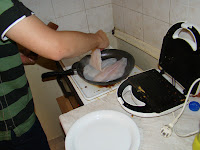Old Orhei
Old Orhei is one of the most beautiful places and rocky monasteries in
Moldova. This archaeological complex is an open-air museum situated between the
villages Trebujeni and Butuceni 60 km North East from Chistanau.
The name Orhei means “fortification”. Earlier at
the beginning of the XIV century the Golden Horde conquered this territory. But
later inhabitants moved 18 km to the North, to the new Orhei and since then that
medieval city Orhei was named «Old Orhei».
The
museum complex Old Orhei is a system of historical monuments and natural
landscapes. It consists of few promontories. The central promontory in Old
Orhei is called Pestere. Its name derives from the many caves carved in it
('Pestere' is translated from Romanian as 'caves'). The Butuceni headland
contributes to the Old Orhei very well. Together with the Pestere promontory it
forms complete complex harmonizing from all points of view. The Butuceni
promontory is great from both geological view and the view point of unique
scenery. It has tens of calcareous slates, spacious caves, small grottos. The
wonderful view and ancient traces impress every guest of this place.
Old Orhei
is famous for the cave monasteries located there. This zone was ideal for the
primary monasticism of early Christian community. It was isolated from the
outer world. At the time when Christians came here there must have been smaller
and bigger caves in the calcareous rocks cut by pre-historic tribes living on
this territory. Christian life in the Old Orhei caves became eternal and saint.
In the medieval period monastery life intensification made monks to deepen the
caves. There also appeared new caves. Nowadays some caves are preserved well.
Others were damaged, mainly by earthquakes which are frequent in this area. The
researches show that tens of monasteries fell into waters of Raut River.
However still many complexes are in good condition.
Another
construction of great interest is the Turkish bath. It appeared when the Golden Horde conquered
this territory. The city existing here was turned into oriental one with the
name Shehr al-Cedid.
Adapted from:














































